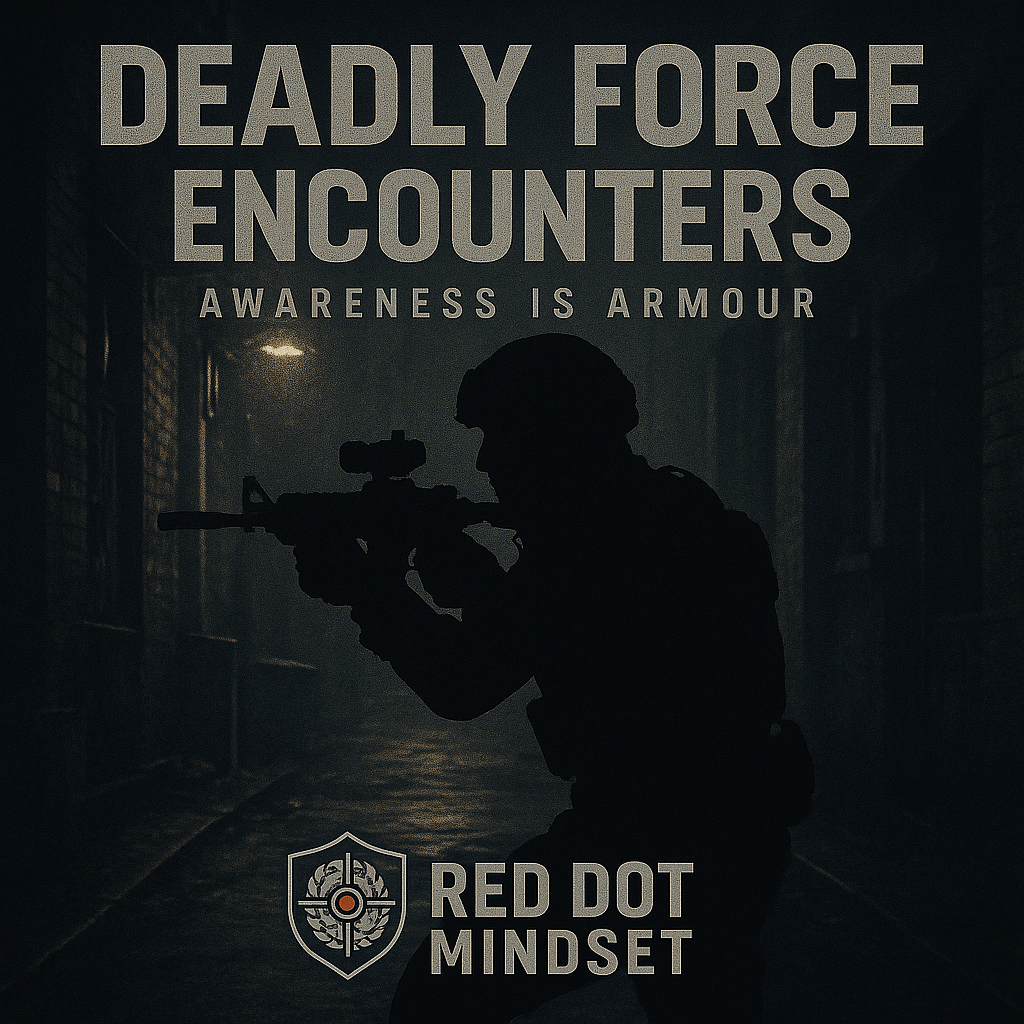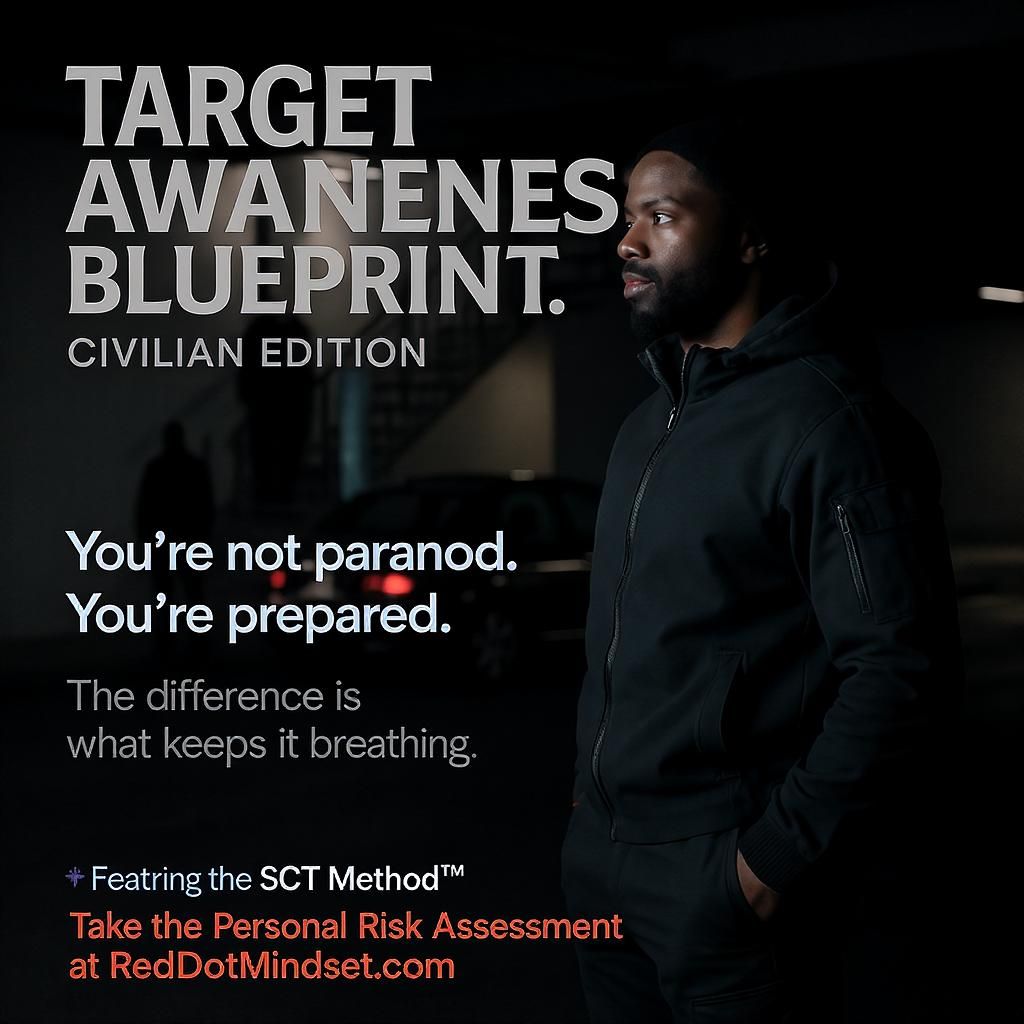[00:00:00] Speaker A: Welcome to the Deep Dive. We dig into the key insights from important sources, basically giving you a shortcut so you can be genuinely well informed.
Today we're doing a deep dive into something really practical. It's a powerful way to understand and more importantly, navigate conflict. We're talking about the four pillars of social conflict. Our goal here is pretty simple, to give you the insights you need to better understand human interactions and ultimately boost your own personal safety.
[00:00:29] Speaker B: Yeah, this is a really variable system for civilians. It's designed, you know, specifically to help you live what's called left of bang, which is really a mindset. Right. Being proactive, observant, and ready to act decisively if needed. This framework, it comes from Gray Matter Ops, and it's actually a very accessible take on the foundational work done by Rory Miller.
[00:00:47] Speaker A: Okay, so adapted from Rory Miller. And who developed this specific four pillars system at Gray Matter Ops?
[00:00:53] Speaker B: That would be Mickey Midow. He's the founder of Gray Matter Ops and the creator of this specific four pillars model.
[00:00:59] Speaker A: Got it. And like you said, it's about empowerment. The idea isn't to make you afraid. It's to equip you. We want you to be able to spot potential issues, maybe de escalate them, or ideally, just avoid dangerous interactions altogether. What really stands out when you look at this is how often these conflicts boil down to things like ego or dominance or, you know, social control.
[00:01:21] Speaker B: Exactly. Understanding those drivers is key. And to really get the pillars, we first need to make a really important distinction that Gray Matter Ops highlights. It's the difference between social conflict and asocial conflict. They might both look like aggression on the surface, but they operate very differently.
[00:01:37] Speaker A: Okay, so we'll break that down. How does gray Matter Ops define social violence? First, what's driving it?
[00:01:43] Speaker B: Social violence is. It's fascinating, actually. It's almost always driven by ego or a need to dominate someone, maybe protect a reputation. The key thing that sets it apart is that it's usually public.
And it kind of operates with these weird, unwritten rules, like a strange performance.
[00:01:59] Speaker A: Performance. So, like, there's an audience involved, or at least the idea of an audience.
[00:02:04] Speaker B: Precisely. Think about it. If someone's trying to, you know, save face or look tough, they're not likely to do it alone in a dark alley. They need people to see it. So these rules, they're not written down anywhere, but people kind of know them. It's about status. Maybe someone feels slighted or they're trying to establish, like, a pecking order.
[00:02:23] Speaker A: Right. So you see a lot of Posturing, maybe shouting, getting in faces, that kind of thing.
[00:02:27] Speaker B: Exactly. Lots of noise, often. And there's usually an audience or the potential for one. And that really shapes how people behave. It's like this. This weird dance where both sides know the steps, even if they're trying to lead.
[00:02:41] Speaker A: Okay, that makes sense. Now contrast that with asocial violence. That sounds completely different.
[00:02:46] Speaker B: It really is. A social conflict is predatory, it's cold, it's calculated, and it's purely about achieving a goal. There are no rules, no ego displays, no need for an audience. The person isn't trying to prove anything to you or anyone else. They just want something. Maybe your wallet, maybe control of the situation, maybe just to inflict harm.
[00:03:04] Speaker A: So examples would be like a straightforward robbery, or maybe a sudden unprovoked assault.
An ambush.
[00:03:12] Speaker B: Exactly those things. The intent is just to take or harm or control.
They don't care about your status or feelings. And it's impersonal in a chilling way.
[00:03:22] Speaker A: But you mentioned sometimes the lines can blur. Like a situation could start one way and then shift.
[00:03:28] Speaker B: Yeah, that's where it gets tricky. A robbery, for instance. It might start purely as social. Someone just wants your money. But then maybe they start humiliating you in front of others. Or they use the robbery to intimidate everyone else around. Suddenly it's got social elements mixed in.
[00:03:43] Speaker A: Ah, so it becomes partly about dominance or reputation during the act itself.
[00:03:48] Speaker B: Right. And while Gray Matter Ops has separate training for purely OSOC threats, recognizing when that social element pops up is really important because how you respond might need to change.
[00:03:58] Speaker A: Okay, that distinction is crucial. So with that foundation, let's get into the framework itself. The four pillars of social conflict you mentioned. Gray Matter Ops uses color codes, which sounds really practical for remembering them quickly.
[00:04:09] Speaker B: Yes, very practical. It helps you categorize what you're seeing in real time.
[00:04:13] Speaker A: Alright, let's start with pillar one, the dominance display, coded on yellow. What's the core idea here?
[00:04:21] Speaker B: This one is pretty much exactly what it sounds like. It's a direct challenge to your ego, your status. It's almost always loud, very public and highly theatrical. Think of animals posturing. Trying to look bigger and scarier without actually fighting yet.
[00:04:38] Speaker A: Yeah, we've all seen that, haven't we? Like a shouting match over a parking spot, or maybe in a bar. Two people puffing out their chests. Even sometimes subtler stuff at work. Right, Aggressive posturing.
[00:04:48] Speaker B: Absolutely. Those are classic examples. The key indicators you want to look for are pretty obvious. Usually raised voice, someone getting right up in your personal space. The puffed up chest, maybe aggressive finger pointing.
[00:04:58] Speaker A: Okay, so if you see that happening, what's the recommended SCT response? That's the situational conflict tactics response. Right?
[00:05:04] Speaker B: Right. Your SCT response is to immediately scan.
Look for what they might be using as ego bait and definitely check who else is watching the audience. Your counter strategy is about de escalation and disengagement. Blade your body turns slightly sideways, it makes you a smaller target and looks less confrontational. Lower your own voice and just don't engage with the drama.
[00:05:25] Speaker A: So the advice is basically walk away. Don't try to win the argument.
[00:05:29] Speaker B: Pretty much you never win this kind of show.
[00:05:32] Speaker A: Engaging just validates their performance. Even if you outshout them, you still bought into their game. You know the mantra Gray Matter Ops uses for this one is perfect, perfect. Don't join the show. Just refuse to be an actor in their play.
[00:05:43] Speaker B: Okay, don't join the show.
[00:05:44] Speaker A: Got it.
[00:05:45] Speaker B: Now moving from individual ego clashes, sometimes groups get involved. That brings us to pillar two, the pack persuasion. Coded as orange.
[00:05:55] Speaker A: Yes. This is where group dynamics really change things. It's that mob mentality kicking in. Being in a group makes individuals feel bolder, less accountable. They feed off each other's energy. Right, like maybe a group of teenagers surrounding someone or a bunch of drunk friends acting tough and egging each other on. Maybe even public hazing stuff.
[00:06:13] Speaker B: Those are spot on examples, key indicators to watch for here.
Look for group laughter directed at someone circling behavior where you feel like they're closing in. And listen for those verbal taunts. Things like you can let them talk to you like that, trying to pressure you or create division.
[00:06:30] Speaker A: Okay, so if you feel that pack persuasion dynamic starting, what's the SCT response?
[00:06:35] Speaker B: Scan again. Look for exits. Always know your escape routes. Look for potential weak links in the group, maybe someone who looks uncomfortable. And watch how the group's energy shifts your counter strategy. Verbal disengagement can work calmly stating you're not interested. But often silent movement is better. Just create distance.
[00:06:54] Speaker A: So the actionable advice is really about space.
[00:06:56] Speaker B: Absolutely. Create space. Try to break the circle if they're forming one. Prioritize getting away over trying to win or save face. The pack strength is often in that tight knit feeling. If you create distance, you disrupt that. You deny them the dynamic that's making them bold. The mantra here is distance yourself from the drama.
Get out of that group's orbit.
[00:07:19] Speaker A: Okay. Distance yourself from the drama. Makes sense. Now. Sometimes conflict isn't about ego or groups. Sometimes it's more targeted. This is pillar three, the Punitive lesson coded so red.
[00:07:31] Speaker B: Right. This one shifts significantly. It's not really about dominance in the same way it's about punishment.
Someone feels you've crossed some line, maybe a real line, maybe one that only exists in their head, and they've decided they're going to teach you a lesson. It's often sudden, very targeted, and the reaction can seem way out of proportion to whatever they think you did.
[00:07:49] Speaker A: That sounds more dangerous, like the decision to act has already been made.
[00:07:53] Speaker B: Often, yes. That's the scary part. The decision to punish might be made before you even realize you're a target, which means being proactive. Recognizing the signs early is critical.
[00:08:04] Speaker A: So examples might be like road rage that goes beyond yelling, where someone actually follows you quietly and then attacks. Or maybe that coworker who's usually quiet but then suddenly snaps and comes right for you. Public shaming that turns violent.
[00:08:17] Speaker B: Exactly. Those kinds of scenarios fit. The indicators here are often quite chilling because they can be subtle, almost calm.
Look for maybe an unnervingly calm voice, Someone walking directly towards you with intense focus, saying very little. It's that quiet before the storm.
[00:08:34] Speaker A: Okay. Unsettling. So the SCT response for a punitive lesson.
[00:08:38] Speaker B: Scan for that intense blank stare. A sudden creepy silence, or the feeling that someone has target locked onto you specifically. Your counter strategy has to be immediate. Use a verbal jolt. Aloud. No. Or something sharp to break their focus and immediately create movement. Get away.
[00:08:56] Speaker A: So escape is the priority. Ego?
[00:08:58] Speaker B: Absolutely. Escape if you possibly can. Defend yourself only if you absolutely must. The mantra for the punitive lesson is recognize the setup, exit the threat. Because once they're in that punitive mindset, reasoning with them is probably off the table.
[00:09:11] Speaker A: Recognize the setup, exit the threat.
Okay, that brings us to the final pillar. Also, O red pillar four, the performance violence. This sounds theatrical again, but different from the dominance display.
[00:09:26] Speaker B: It is theatrical, but the purpose is different. Here the violence is the performance. It's theater. It's about building a reputation, sending a message to others, or asserting dominance publicly. But you.
You're basically just a prop in their show.
[00:09:39] Speaker A: A prop. So it's not really about you personally, like the punitive lesson might be.
[00:09:43] Speaker B: Not in the same way. The primary goal is the spectacle, the effect it has on the audience. You're just the means to that end.
[00:09:50] Speaker A: Examples. Sadly, we see these online, like those horrible knockout game videos or maybe gang initiation attacks or public muggings where they film it or make sure people are watching.
[00:10:00] Speaker B: Precisely. Those are textbook performance violence. To spot it, you look for the stage being set Are there obvious spectators? Is someone holding up a phone recording? Are they using specific, maybe rehearsed sounding taunts? Over the top body language?
[00:10:14] Speaker A: Okay, so you sense it's a show. What's the SCT response?
[00:10:17] Speaker B: Scan for that stage, the crowd, the recording, the grandstanding. Identify the theatrics.
Your counter strategy is about denying them what they want.
An audience and a reaction. Minimize eye contact. Don't give them the emotional reaction they're looking for. Use de escalating body language that says I'm not playing.
[00:10:35] Speaker A: So the actionable advice is refuse to be part of the cast.
[00:10:39] Speaker B: Exactly. Leave the spotlight. Do not engage in their scene. The mantra Gray Matter Ops uses is brilliant. You're a prop in their show, don't audition. They want you to play a role. The victim, the challenger. Just refuse the audition.
[00:10:51] Speaker A: You're a prop in their show. Don't audition.
[00:10:54] Speaker B: Wow, that's powerful.
Okay, so those are the four pillars of social conflict. But we need to quickly touch on asocial violence. Again, just as a comparison.
[00:11:02] Speaker A: Right. It's crucial to keep that distinction clear. Asocial violence, remember, is purely goal oriented. It's about taking something, money, space, control. It's cold, calculated, often invisible until it's happening. No ego, no performance.
[00:11:16] Speaker B: So the examples are more like armed robbery, home invasion, carjacking. Where the interaction is minimal and focused purely on the objective. Yes. The indicators are different too. Demands might be issued calmly, a weapon shown or implied.
Very little conversation beyond what's needed to get compliance.
[00:11:35] Speaker A: And the SC2 response and mindset here are critical. Especially if a weapon is involved.
[00:11:39] Speaker B: Absolutely critical. Your SCT response involves scanning for those isolation setups. Late night ATMs, empty parking garages, places where you're vulnerable. If a weapon is present, the counter is generally slow. Compliance.
And this is where that other vital gray matter OPSA mantra comes in. Comply for life, not for pride.
[00:11:59] Speaker A: Comply for life, not for pride. Meaning your wallet, your car, your stuff.
It's not worth dying for.
[00:12:04] Speaker B: Exactly. Your goal is survival. Get away safely if you can. Report it later, but survive the encounter. Pride doesn't matter when your life is on the line. Give them what they want if it means you walk away.
[00:12:14] Speaker A: That's a really important mindset shift. Okay, so we understand the pillars, we understand the social distinction. How does Gray Matter Ops help people actually use this stuff? How do you integrate it into daily life?
[00:12:25] Speaker B: They have some really practical tools and training methods. For example, there's a field card. It's literally a wallet sized card you can print out with the pillars on it as a quick reference.
[00:12:35] Speaker A: Oh, that's handy. Like a cheat sheet.
[00:12:37] Speaker B: Yeah, exactly. And they use awareness drills, like watching videos of real incidents and practicing spot the pillar. Yeah, and really helps train your brain to recognize these patterns faster, build that intuitive recognition.
[00:12:50] Speaker A: So you practice identifying them in safe settings to get better at doing it for real.
[00:12:54] Speaker B: Right. Repetition builds that mental muscle. They also suggest something called scenario journaling. Thinking through potential scenarios, how the pillars might apply, and rehearsing your responses mentally.
And all of this ties into their broader STT method, Situational Conflict tactics, which provides a whole system for managing conflict.
[00:13:14] Speaker A: Okay, and how does this all fit with their overall awareness system? I know they use color codes for awareness levels too.
[00:13:20] Speaker B: Yes, that's the gray line. It's their system for escalating awareness.
White, yellow, orange, red, and black.
Think of it as layered on top of the pillars. So you identify a pillar, say a dominance display. Yellow pillar. And the gray line helps you gauge your own readiness level.
[00:13:39] Speaker A: So white is like totally unaware.
[00:13:41] Speaker B: Right. White is switched off. Yellow is relaxed, but alert. General awareness. Orange is a specific alert. You've noticed something specific that requires focus. Red is an imminent threat. Action is likely needed. And black is action happening. You're actively defending or escaping.
[00:13:56] Speaker A: Okay, so the pillars tell you what kind of conflict you might be facing. And the gray line tells you how alert and ready you need to be in response.
[00:14:02] Speaker B: Exactly. It's a comprehensive system for managing awareness and response in real time.
[00:14:06] Speaker A: So wrapping this up, what does all this mean for you? Listening right now, we've taken this deep dive into the four pillars of social conflict.
The goal really is to give you this framework, this understanding of the dynamics often at play in human aggression. And remember, this isn't about making you fearful. It's about empowering you, giving you tools to see things coming, maybe de escalate, maybe just avoid trouble altogether. Especially trouble rooted in ego and control games.
[00:14:33] Speaker B: Yeah, Understanding these pillars and these social contrast, it just gives you a much sharper lens to view the world. Helps you think critically about situations, make proactive choices instead of just reacting. Ultimately, it's about enhancing your safety and frankly, your peace of mind. Day to day. It lets you move beyond just being surprised by conflict and start understanding the mechanics behind it so you can choose a better path.
[00:14:54] Speaker A: And that really captures the core philosophy from gray matter ups, doesn't it? We want to leave you with this thought today, prepared, not paranoid. That's the gray mindset. If you feel ready to take the next step in really owning your personal safety, we strongly encourage you to take the free five minute personal risk assessment, you'll get a customized 30 day action plan. You can find
[email protected] Again, that's red.mindset.com because remember, the safest conflict is usually the one you manage to avoid entirely. And understanding these dynamics, that's a huge first step.




